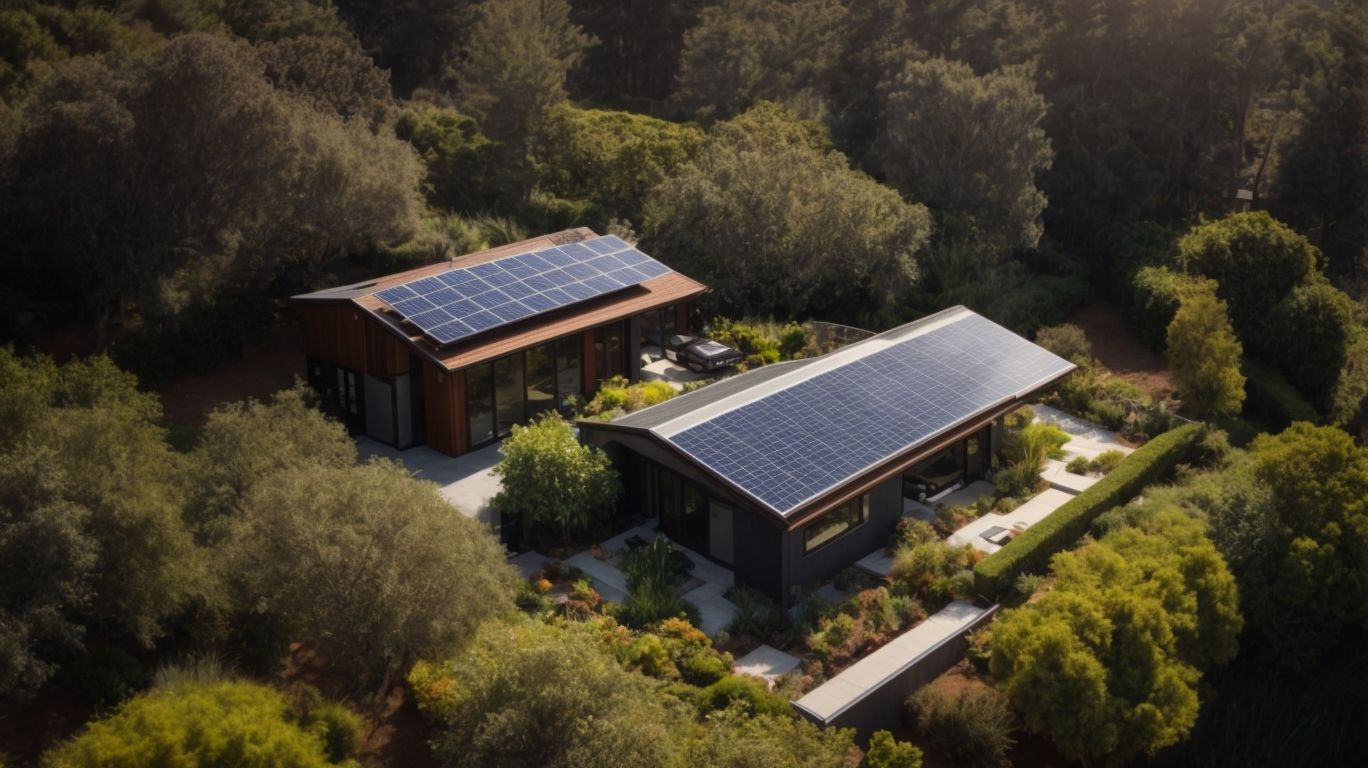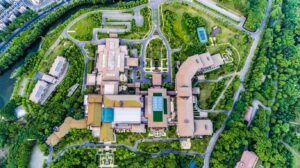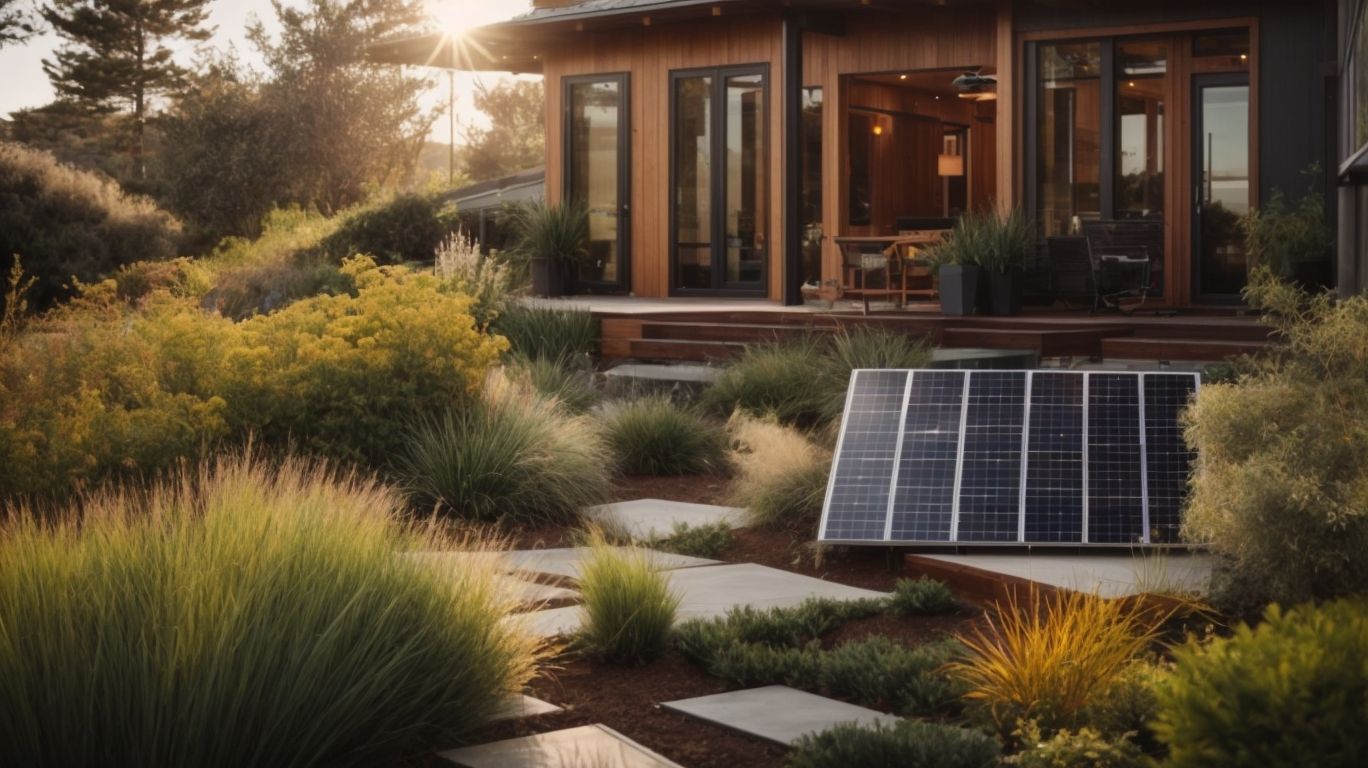
Eco-Friendly Home Expansion: Sustainable Solutions in the Bay Area
Are you considering expanding your home in the Bay Area?
We will explore the benefits of eco-friendly home expansion and the sustainable solutions available to homeowners. From green building materials to energy-efficient appliances, we will discuss how you can incorporate these eco-friendly features into your home expansion project.
There are challenges to overcome, such as higher upfront costs and limited availability of sustainable materials. Learn how homeowners can overcome these obstacles and create a more sustainable living space.
Why Go Eco-Friendly for Home Expansion?
Choosing to go eco-friendly for home expansion is a decision that not only benefits the environment but also contributes to creating a sustainable living space for your family. With the increasing focus on green building practices and sustainable solutions, embracing eco-friendly options in the Bay Area can significantly reduce your carbon footprint and promote green living in the community.
In the Bay Area, where environmental consciousness is ingrained in the lifestyle, opting for eco-friendly home expansion aligns with the values of the community.
By incorporating features like energy-efficient appliances, sustainable materials, and green technologies, homeowners can not only lower their utility bills but also enhance the overall comfort and health of their living space.
This conscious choice towards sustainability also increases the property value and appeal, reflecting a modern and responsible approach to homeownership in the Bay Area.
What Are the Benefits of Sustainable Home Expansion?
Sustainable home expansion offers a range of benefits, including reduced energy consumption, lower utility costs, and a decreased reliance on non-renewable resources. By incorporating environmentally friendly features such as energy-efficient appliances, solar panels, and rainwater harvesting systems, homeowners can create a more sustainable living environment that promotes energy efficiency and conservation.
Choosing sustainable construction materials like bamboo flooring or recycled materials can further enhance the eco-friendliness of the expansion.
Implementing a smart home system that monitors energy usage and adjusts settings accordingly can also optimize energy efficiency.
Integrating a green roof or using low-flow fixtures for water conservation can contribute to reducing the home’s overall environmental impact.
These practices not only benefit the planet but also improve the well-being of inhabitants through a healthier and more comfortable living space.
What Are the Sustainable Solutions for Home Expansion in the Bay Area?
Implementing sustainable solutions for home expansion in the Bay Area involves utilizing green building materials, installing energy-efficient appliances, incorporating water-saving fixtures, integrating solar panels for renewable energy generation, and setting up a rainwater harvesting system to reduce water consumption.
These eco-friendly practices not only help reduce the carbon footprint of your home but also contribute to long-term cost savings. Green building materials such as bamboo flooring, reclaimed wood, and recycled glass can enhance the aesthetics of your expanded living space while minimizing environmental impact. Energy-efficient appliances like ENERGY STAR-rated refrigerators, dishwashers, and HVAC systems can significantly lower your electricity bills. Water-saving fixtures such as low-flow toilets, showerheads, and faucets conserve water without compromising on performance. Incorporating solar panels for renewable energy generation can further decrease your reliance on traditional power sources, reducing both your utility expenses and environmental impact.
Green Building Materials
Using green building materials is a fundamental aspect of sustainable home expansion, emphasizing the importance of selecting eco-friendly and sustainable materials that contribute to green design practices and promote sustainable construction techniques. Incorporating these sustainable practices ensures a reduced environmental impact and a healthier living space for occupants.
By choosing materials like sustainably sourced wood, recycled glass, bamboo flooring, and low VOC paints, homeowners can create spaces that not only look beautiful but also support the planet. Green building materials help in conserving natural resources, reducing energy consumption, and improving indoor air quality. These materials often have longer lifespans, reducing the need for frequent replacements and minimizing waste generation. Embracing sustainable practices in construction aligns with green building certification standards and sustainable building codes, fostering a more environmentally conscious approach to architecture and design.
Energy-Efficient Appliances
Opting for energy-efficient appliances in home expansion projects can lead to significant energy savings, reduced utility bills, and a lower overall carbon footprint. By investing in eco-friendly appliances and energy-efficient upgrades, homeowners can enhance their sustainable living practices while enjoying the benefits of long-term cost savings and environmental conservation.
These appliances are designed to consume less energy without compromising performance, making them a smart choice for those looking to reduce their environmental impact. In addition to saving money on monthly energy bills, energy-efficient appliances also contribute to a greener planet by reducing greenhouse gas emissions. By adopting these energy-efficient home solutions, individuals can play a part in creating a more sustainable future for generations to come.
Water-Saving Fixtures
Incorporating water-saving fixtures is essential for sustainable home expansion, promoting efficient water usage, conservation efforts, and the implementation of energy-efficient water systems. By adopting eco-friendly plumbing solutions and water-saving technologies, homeowners can reduce water wastage, lower utility costs, and contribute to environmental sustainability.
These eco-conscious fixtures play a pivotal role in sustainable water management by significantly decreasing water consumption without compromising performance. From low-flow toilets to aerated faucets, each component works cohesively to minimize water usage and enhance overall efficiency. By integrating such eco-friendly solutions, households can play a crucial part in preserving our precious water resources and reducing their carbon footprint. The ripple effect of these efforts extends to fostering a greener environment and supporting the global movement towards sustainable living practices.
Solar Panels
Installing solar panels is a key sustainable solution for home expansion, enabling homeowners to generate renewable energy, achieve net-zero energy consumption, and implement sustainable energy systems.
Through the utilization of solar panels, households can tap into an abundant, clean energy source that not only powers their homes efficiently but also helps in the reduction of greenhouse gas emissions. By integrating solar power into their energy mix, individuals can take significant steps towards achieving energy independence and contributing to the development of a more sustainable future. Solar panels offer long-term cost savings, as they provide a reliable and consistent source of electricity without the need for traditional fossil fuels.
Rainwater Harvesting System
Implementing a rainwater harvesting system as part of sustainable home expansion practices allows homeowners to collect and utilize rainwater for various purposes, promoting sustainable practices, green infrastructure development, and contributing to sustainable real estate initiatives. By integrating rainwater harvesting, households can reduce water consumption, minimize runoff, and support eco-friendly landscaping efforts.
Rainwater harvesting systems play a vital role in reducing strain on traditional water sources, especially during periods of drought or water scarcity. Not only does this practice help in water conservation, but it also adds value to properties with sustainable features, attracting environmentally conscious buyers interested in eco-friendly homes.
Rainwater collection systems can enhance the aesthetic appeal of landscapes through the use of stored rainwater for irrigation, fostering lush gardens and vibrant plant life.
How to Incorporate Sustainable Solutions in Home Expansion Projects?
Incorporating sustainable solutions in home expansion projects requires careful planning, research on green building materials and contractors, consideration of energy-efficient design principles, and budgeting for sustainable features. By embracing green technology and sustainable development practices, homeowners can create environmentally responsible spaces that prioritize energy conservation and sustainable living.
Implementing sustainable practices within home expansion projects involves selecting eco-friendly building materials, such as recycled wood or energy-efficient insulation, and working with contractors experienced in green construction methods.
Green building standards, like LEED certification, offer guidelines for creating energy-efficient homes with low environmental impact. Utilizing solar panels, energy-efficient appliances, and smart home technology can further reduce the carbon footprint and ongoing energy costs.
By integrating these sustainable elements, homeowners can enjoy a comfortable living space while contributing positively to the environment.
Plan Ahead
Planning ahead is crucial for successful integration of sustainable solutions in home expansion projects, ensuring that homeowners consider eco-friendly design ideas, green living tips, and sustainable home solutions from the initial stages of planning.
This proactive approach allows individuals to incorporate energy-efficient appliances, utilize sustainable materials, and maximize natural light in their home design. By thinking ahead, homeowners can also plan for features like rainwater harvesting systems, rooftop gardens, and solar panels, which contribute to a more eco-friendly and self-sufficient household. Implementing these green living tips not only benefits the environment but can also result in long-term cost savings and improved quality of life for residents.
Research Green Building Materials and Contractors
Conducting thorough research on green building materials and contractors is essential for selecting the most suitable options that align with current green building trends, sustainable infrastructure requirements, and potential green home upgrades. By staying informed about the latest sustainable practices and materials, homeowners can make informed decisions that support their eco-friendly home expansion goals.
Exploring the array of eco-friendly practices available in the market can also lead to innovative solutions for energy efficiency and reduced environmental impact.
Collaborating with experienced contractors who specialize in green building can provide valuable insights and recommendations for implementing sustainable infrastructure advancements in residential spaces.
By combining the use of renewable resources, such as solar panels and energy-efficient appliances, with eco-conscious building materials like bamboo flooring and recycled glass countertops, homeowners can contribute to a greener future while enhancing the value and comfort of their living spaces.
Consider Energy-Efficient Design
Incorporating energy-efficient design elements is key to sustainable home expansion, with a focus on climate-responsive design strategies, green retrofit options, and energy-efficient lighting solutions. By considering these aspects during the design phase, homeowners can optimize energy performance, enhance indoor comfort, and reduce their environmental impact through efficient lighting systems.
- Climate-responsive design strategies play a crucial role in adapting homes to their surroundings, ensuring optimal thermal comfort and reducing reliance on mechanical heating and cooling systems.
- Green retrofit options, such as upgrading insulation and installing energy-efficient windows, can significantly cut energy consumption.
- Energy-efficient lighting solutions, such as LED fixtures and daylighting techniques, not only enhance interior ambiance but also lower electricity bills.
Incorporating these sustainable design principles not only benefits the environment but also improves the overall quality of living.
Budget for Sustainable Features
Allocating a budget for sustainable features is essential for successful implementation of eco-friendly practices and energy-efficient upgrades during home expansion projects. By prioritizing green home maintenance, energy-efficient HVAC systems, and sustainable home improvement projects, homeowners can ensure long-term cost savings and environmental benefits.
Sustainable features provide not only a boost in energy efficiency but also contribute to a healthier indoor environment. Regular green home maintenance such as proper insulation, using sustainable building materials, and investing in energy-saving appliances can significantly reduce utility costs and carbon footprint. Upgrading to energy-efficient HVAC systems can further enhance comfort levels while lowering energy bills. Incorporating sustainable home improvement projects like solar panel installations or rainwater harvesting systems adds value to the property and promotes a greener lifestyle.
What Are the Challenges of Eco-Friendly Home Expansion in the Bay Area?
Embarking on an eco-friendly home expansion journey in the Bay Area comes with its own set of challenges, including higher upfront costs, limited availability of sustainable materials and contractors, and navigating through permits and regulations that govern sustainable urban planning initiatives. Overcoming these obstacles requires strategic planning, community engagement, and a commitment to sustainable development principles.
The integration of green infrastructure and sustainable design principles in the Bay Area further complicates the expansion process, as adherence to these eco-friendly standards often necessitates specialized expertise and compliance with stringent environmental guidelines.
Homeowners seeking to expand their residences in alignment with sustainable communities’ visions must also contend with the complexities of retrofitting existing structures to meet modern eco-friendly standards.
Balancing the desire for aesthetic appeal with practicality and sustainability poses a significant challenge for individuals embarking on eco-conscious home expansion projects in this region.
Higher Upfront Costs
One of the primary challenges of eco-friendly home expansion in the Bay Area is the higher upfront costs associated with implementing green home technology, sustainable housing solutions, and green home design features. While the initial investment may be substantial, the long-term benefits of energy savings and environmental conservation make it a worthwhile endeavor for eco-conscious homeowners.
The incorporation of sustainable building practices and green home upgrades can significantly enhance the overall value and appeal of a property. Innovative technologies such as solar panels, energy-efficient appliances, and smart home systems not only reduce utility bills but also contribute to a reduced carbon footprint. Embracing eco-friendly design elements such as passive solar design, green roofs, and natural insulation materials can further elevate the sustainability factor of a home. These careful considerations not only benefit the environment but also create healthier living spaces for inhabitants.
Limited Availability of Sustainable Materials and Contractors
Navigating the limited availability of sustainable materials and contractors poses a significant challenge for eco-friendly home expansion projects in the Bay Area, impacting the implementation of sustainable building codes, green home improvements, and eco-friendly insulation solutions. Overcoming this hurdle requires proactive research, networking within the eco-friendly community, and exploring alternative sources for sustainable materials.
Due to the growing demand for eco-friendly practices, obtaining skilled contractors well-versed in sustainable building methods has become increasingly difficult. The strict adherence to sustainable building codes necessitates the use of specific materials and techniques that not all contractors are familiar with, leading to delays in project timelines and potential cost overruns.
Embracing green improvements such as energy-efficient appliances, solar panels, and water-saving fixtures further compounds the need for specialized expertise in eco-friendly construction. Finding suitable insulation solutions that enhance energy efficiency while maintaining environmental consciousness adds another layer of complexity to the already intricate process of creating sustainable homes in the region.
Permits and Regulations
Dealing with permits and regulations is a common obstacle in eco-friendly home expansion endeavors in the Bay Area, as adherence to sustainable design principles, city development guidelines, and green roof specifications is crucial.
Staying informed about the evolving regulations is essential for homeowners looking to incorporate environmentally responsible practices into their building plans. City development requirements often necessitate detailed documentation and approval processes, which can be challenging to navigate without a solid understanding of sustainable urban planning principles.
Green roof installations, while offering numerous environmental benefits, also come with specific regulatory considerations that need to be addressed. By proactively addressing these challenges and seeking to align with sustainable design standards, homeowners can contribute to the overall development of greener, more resilient cities.
How Can Homeowners Overcome These Challenges?
To overcome the challenges of eco-friendly home expansion in the Bay Area, homeowners can explore financing options that support sustainable community development, invest in energy-efficient water systems and sustainable waste management solutions. By leveraging financial resources, community networks, and staying informed about regulatory changes, homeowners can navigate the complexities of green construction and achieve their eco-friendly renovation goals.
Engaging with the local community can also provide valuable insights and resources for sustainable infrastructure projects. Collaborating with neighbors on shared initiatives, such as rainwater harvesting systems or community composting programs, can not only strengthen community bonds but also promote eco-friendly practices on a larger scale.
Homeowners can consider participating in local green building associations and workshops to access expert advice, learn about innovative sustainable technologies, and stay up-to-date on the latest eco-friendly trends in construction and renovation.
Explore Financing Options
Exploring various financing options is a practical approach for homeowners looking to overcome the financial challenges of eco-friendly home expansion in the Bay Area, enabling investments in green home automation, retrofits, and eco-friendly roofing solutions. By seeking out eco-friendly financing programs and incentives, individuals can make sustainable upgrades more accessible and affordable for their projects.
These financing options not only facilitate the adoption of green technologies but also align with sustainable building codes that aim to reduce the environmental footprint of construction activities.
Green home automation, for instance, offers homeowners the ability to control energy usage efficiently, contributing to overall energy savings.
Retrofits and roofing solutions, when financed thoughtfully, can enhance a home’s energy efficiency and resilience against environmental factors, making them vital components of eco-friendly construction plans in the region.
Network with Other Eco-Friendly Homeowners
Building a network with other eco-friendly homeowners can provide valuable insights, resources, and support for navigating the challenges of sustainable home expansion in the Bay Area.
Sharing experiences and innovative ideas related to energy conservation and sustainable living practices within this network can lead to the implementation of cutting-edge solutions in each homeowner’s residence.
By fostering a community of like-minded individuals focused on environmentally conscious lifestyles, opportunities for collective action towards promoting green technologies and eco-friendly habits can be explored.
Through collaborations on urban development initiatives, members of this network can contribute to creating more sustainable and resilient communities in the region, benefiting both the local environment and the overall quality of life.
Stay Informed about Changes in Regulations
Keeping abreast of changes in regulations is essential for homeowners engaged in eco-friendly home expansion projects in the Bay Area, as it impacts sustainable home improvement projects, green insulation choices, and the adoption of sustainable energy systems. By staying informed and adapting to evolving regulations, individuals can ensure compliance with green building codes and contribute to sustainable building practices.
By being well-informed, homeowners can explore various eco-friendly home improvement projects that not only enhance the aesthetics of their homes but also reduce their carbon footprint.
Investing in high-quality insulation options such as recycled materials or natural fibers can significantly improve energy efficiency. Incorporating sustainable energy systems, like solar panels or geothermal heating, can further elevate the sustainability of the property and help in reducing utility costs in the long run.




No Comments